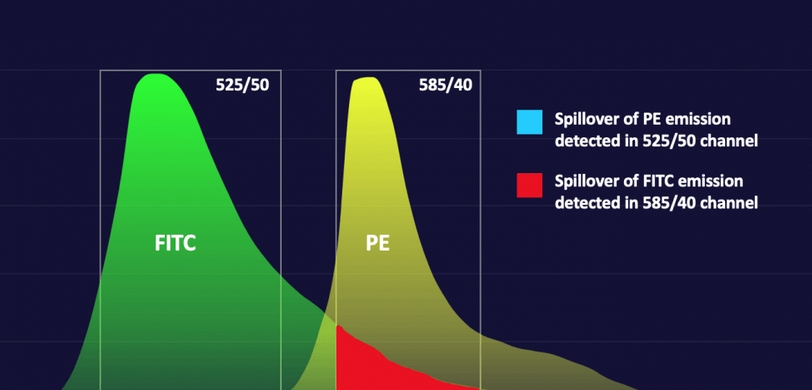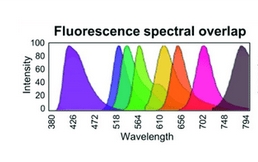Blog Post
Unraveling Flow Cytometry Fluorescent Compensation

Flow Cytometry Fluorescent Compensation remains a crucial aspect of modern biomedical research. As researchers and clinicians frequently use flow cytometry to analyze and sort cells based on their characteristics, understanding fluorescent compensation is essential. In this post, we will simplify the concept of flow cytometry fluorescent compensation and highlight its significance.
What is Flow Cytometry?
Flow cytometry is a powerful tool that lets scientists analyze individual cells within a mixed population. It does so by passing cells through a laser beam and detecting the scattered light and emitted fluorescence.
The Challenge of Spectral Overlap
When using multiple fluorescent labels, there’s a common challenge:
- Some fluorescent molecules absorb light at one wavelength but emit it at another.
- As a result, the emitted fluorescence from one molecule might overlap with the detection range of another.
Understanding Fluorescent Compensation
Here’s where fluorescent compensation comes into play:
- Baseline Setting: Researchers first analyze cells labeled with a single fluorochrome to set a baseline.
- Overlap Detection: The system identifies how much fluorescence from this single fluorochrome spills over into other detectors.
- Adjustment: Using this data, the system compensates, ensuring that each fluorochrome’s signal remains specific and does not falsely indicate the presence of another molecule.
- Accurate Results: Proper compensation guarantees accurate multi-color analysis.

Why is it Important?
Correct fluorescent compensation ensures:
- Precise cell analysis.
- Reliable data interpretation.
- Minimization of false positives.
Conclusion
Flow Cytometry Fluorescent Compensation, though technical, plays an integral role in ensuring accurate cell analysis. As flow cytometry technology continues to advance, mastering the intricacies of fluorescent compensation will remain pivotal for researchers worldwide. By understanding and correctly applying this process, scientists can harness the full power of flow cytometry in their work.

